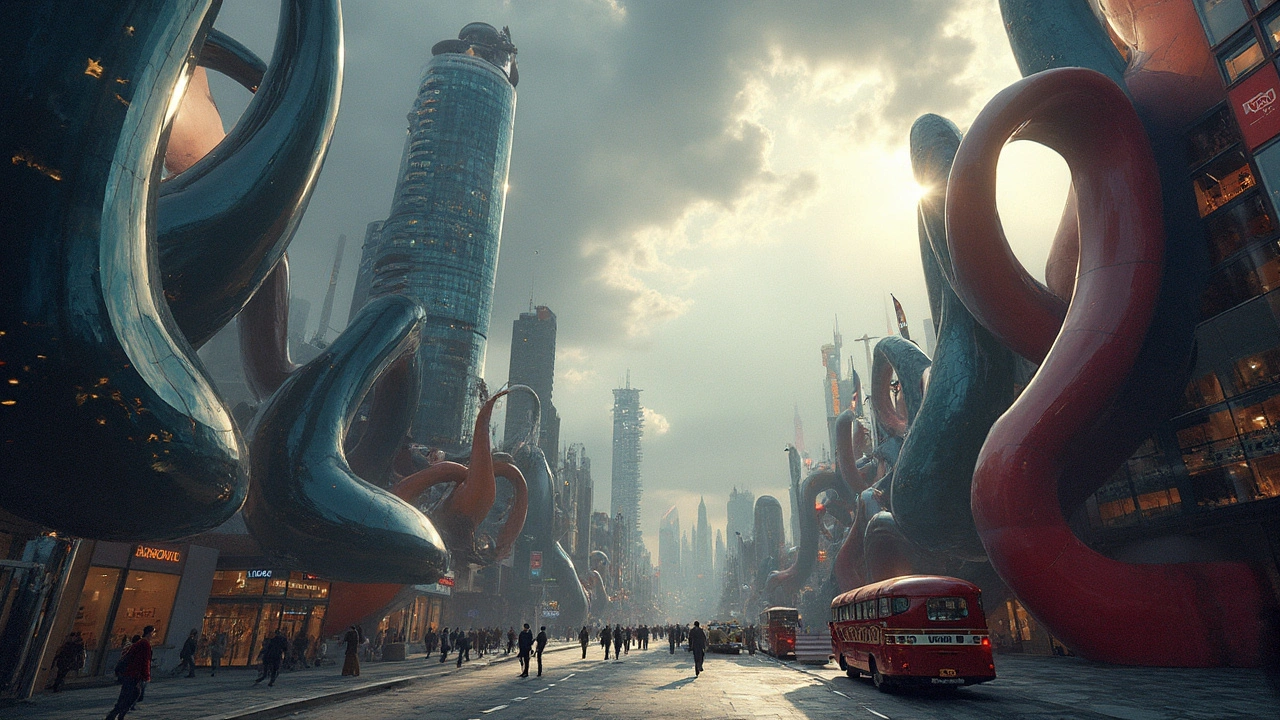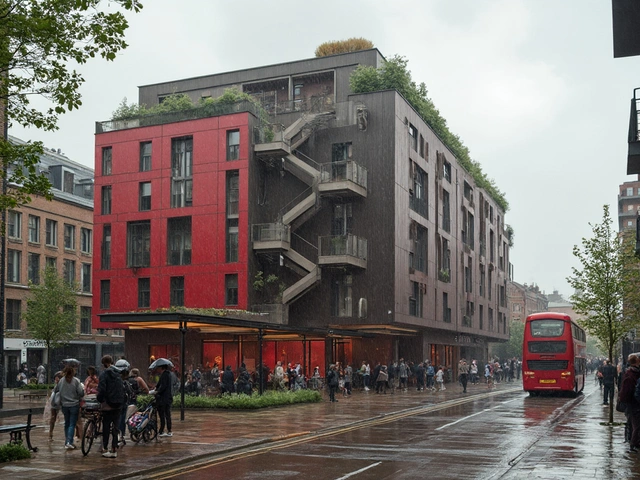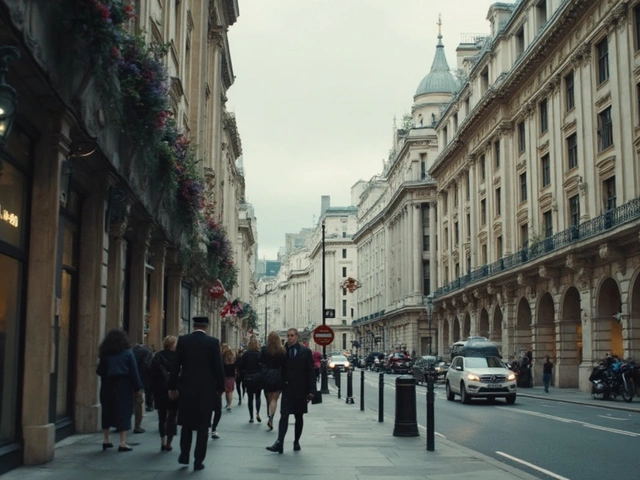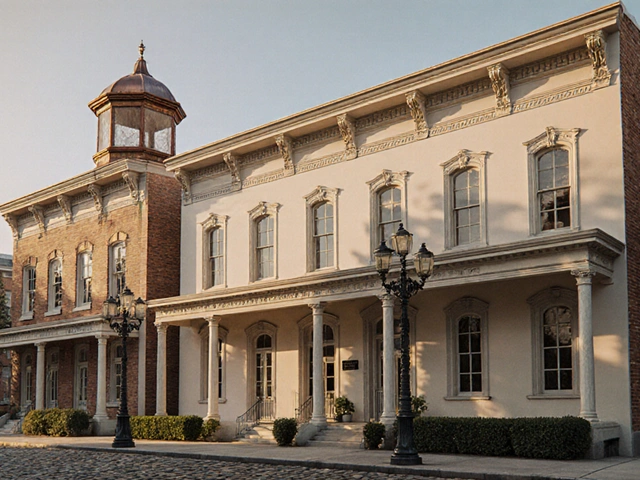Ever walked past a building that makes you stop and stare, wondering if it came from someone’s dream—or even a weird sci-fi movie? That’s probably expressionist architecture doing its thing. Instead of playing it safe with straight lines and even angles, this style goes for drama, feeling, and shapes that sometimes look impossible. It’s all about grabbing your attention and making you feel something, whether it’s awe, confusion, or just plain curiosity.
If you’re tired of cookie-cutter buildings and want to understand why some architects just can’t stick to the ordinary, keep reading. In this guide, you’ll find out what really sets expressionist architecture apart, some wild stories from its past, and even ways you can use its boldness to shake up your own space—without needing a millionaire’s budget.
- What Makes Expressionist Architecture Different?
- A Brief History: The Movement’s Wild Start
- Famous Examples That Defy Expectations
- Hidden Stories and Surprising Facts
- Bringing Expressionist Vibes Into Modern Life
- Easy Tips for Expressionist-Inspired Design
What Makes Expressionist Architecture Different?
If you compare expressionist architecture to the typical boxy buildings you see on most city streets, it’s like night and day. These buildings ditch the usual symmetry, right angles, and plain glass for bold curves, jagged shapes, and sometimes even downright weird forms. Think of it like art you can walk into—designers put feelings first, and the final result is often something that makes you stop and say, “Whoa, what is that?”
Here’s what sets expressionist architecture apart:
- Bold, Emotional Shapes: These buildings often look like frozen movements or gestures. The idea is to show the architect’s feelings through concrete, steel, and glass. You’ll see wild roofs, swooping facades, uneven windows, and unexpected angles.
- Breaking the Mold: Forget about copying old styles. Expressionist architects didn’t want to follow the rules or stick to standard blueprints. They invented new ways to build, using materials in unique ways.
- Play with Light: Light isn’t just for seeing in these spaces. It’s a big part of the vibe. Odd-shaped windows and walls bend and play with light, making the inside of the building feel totally different depending on the time of day.
- Materials: While many buildings in the early 1900s used plain brick or stone, expressionists experimented with concrete, glass, and even steel. Sometimes the outside looks unfinished or raw. It wasn’t about perfection; it was about energy and impact.
| Common Feature | Typical Use in Expressionist Buildings |
|---|---|
| Curved Forms | Used to break up monotony and create flow |
| Asymmetry | Makes each building unique and eye-catching |
| Natural Inspirations | Shapes that mimic crystals, waves, or even plants |
| Visible Structure | Letting beams and supports show, not hiding them |
One cool tip: Next time you see a building with a roof that’s uneven or looks like it’s melting, there’s a good chance it’s expressionist. This style pushes past what your brain expects and surprises you every time. It sticks out—on purpose. That’s what makes it so different and, honestly, what makes it way more fun.
A Brief History: The Movement’s Wild Start
The story of expressionist architecture really kicks off in Germany right after World War I. Architects were fed up with old rules and wanted to show real emotion through buildings. This was around 1918 to 1931, a short window, but it totally changed the look of modern cities. Instead of copying the past, they felt it was time for something new—something bold.
One of the earliest and loudest voices in this crowd was Bruno Taut. His 1914 "Glass Pavilion" in Cologne looked nothing like anything before—basically a crystal dome covered in colorful glass. For most folks back then, it was as shocking as today's weirdest art installations. Erich Mendelsohn, another big name, built the Einstein Tower in Potsdam, which looks more like a spaceship than an observatory.
Most of this happened with a tight group of architects who published drawings and manifestos rather than immediately constructing whole neighborhoods. The German group known as Arbeitsrat für Kunst (Worker's Council for Art) wanted to make architecture for everyday people, not just palaces for the rich. Their wildest ideas sometimes stayed on paper, but even the drawings got lots of attention and pushed the conversation forward.
Check this out—by the early 1920s, nearly half the architects in Berlin claimed to be experimenting with expressionism. That’s how much buzz this movement made in just a few years. At the same time, new building materials—especially concrete and glass—gave these designers the freedom to make shapes that were practically impossible before. No more just stacking bricks in a straight line.
If you ever find yourself in Amsterdam, the "Amsterdam School" applied these same ideas to housing blocks. Those buildings are basically art pieces you can live in. What’s wild is that this short burst of creativity still influences architects today, especially anyone fed up with boring buildings full of right angles.
| Key Dates | Event |
|---|---|
| 1914 | Bruno Taut's Glass Pavilion built in Cologne |
| 1918 | Birth of expressionist architecture movement |
| 1921 | Einstein Tower, Potsdam finished |
| 1931 | Movement mostly fades as other styles (like modernism) take over |
Famous Examples That Defy Expectations
If you want to see expressionist architecture in action, you don’t have to look far—some of these buildings are world-famous. Let’s start with the Einstein Tower in Potsdam, Germany. Built by Erich Mendelsohn in 1921, it looks almost alien, with curves and wavy shapes that made people scratch their heads back in the day. The weird thing? It was designed to study solar rays for Albert Einstein. Seriously, nothing about it screams ‘plain observatory.’
Next up: the work of Bruno Taut. His Glass Pavilion at the Cologne Deutscher Werkbund Exhibition in 1914 is pure eye candy. Picture stained glass everywhere, swirling staircases, and a bright dome—like a rainbow exploded in building form. Sadly, the original doesn’t exist anymore, but you can still find photos that capture its wild spirit.
Then there’s the Czech Republic’s Dancing House, designed by Vlado Milunić and Frank Gehry and finished in 1996. Locals call it "Fred and Ginger" because the two towers seem to dance. It’s curved, playful, and totally stands out among the more classic buildings in Prague. Gehry himself said he wanted it to look like it was actually moving, and you can see exactly what he meant.
For anyone into stats and fun details, check out this quick rundown of only a few iconic expressionist buildings from different countries:
| Building | Location | Architect | Year Completed |
|---|---|---|---|
| Einstein Tower | Potsdam, Germany | Erich Mendelsohn | 1921 |
| Glass Pavilion | Cologne, Germany | Bruno Taut | 1914 |
| Dancing House | Prague, Czech Republic | Vlado Milunić & Frank Gehry | 1996 |
These aren’t just ‘strange’ buildings. Each one shook things up in its city, causing people to argue, celebrate, or sometimes both. And that’s the magic of expressionist design: it forces you to pay attention. If you ever visit Berlin, swing by the Shell-Haus by Emil Fahrenkamp for another hit of that fluid, almost wavy style. It’s a big leap away from the boxes you’d usually expect from the 1930s.
So, if you spot a building that makes you do a double-take, there’s a good chance it owes something to the pioneers of expressionist architecture. These aren’t just landmarks—they’re proof that architecture can break all the rules and still make perfect (if surprising) sense.
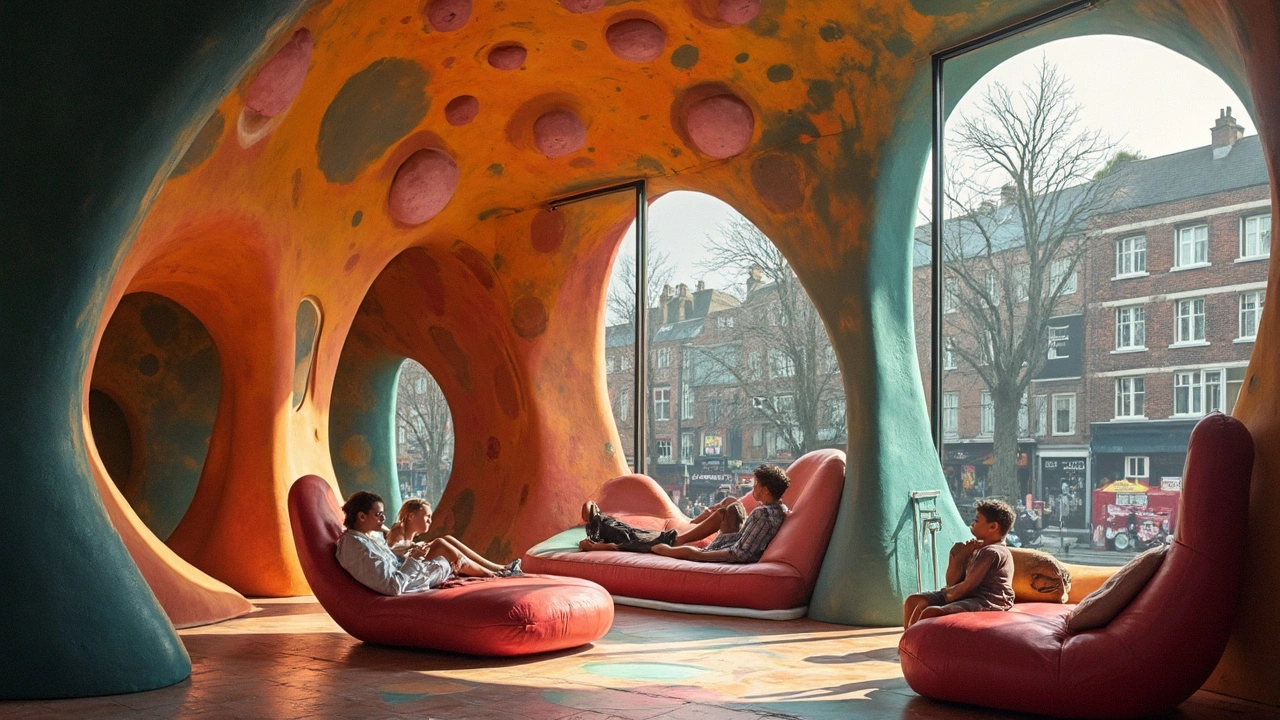
Hidden Stories and Surprising Facts
A lot of folks think expressionist architecture was just about wild shapes, but its backstory has enough twists to rival a good movie. For starters, a bunch of early expressionist architects were trying to rebel against the cold, machine-like feel of early modernism. Instead of glass boxes, they wanted buildings that actually made you feel something real—joy, wonder, even confusion.
Here’s one for the history buffs: not many realize that the famous Einstein Tower in Germany was meant to look almost like it was melting. When architect Erich Mendelsohn designed it in 1917, he wanted the building to reflect wild new ideas in science—specifically Einstein’s theory of relativity. The thing is, concrete wasn’t as advanced back then, so they had to switch to brick covered with plaster to keep the look. The finished tower didn’t quite match the initial sketches, but it still stands out like nothing else around.
Another fact most people miss? Expressionist architects got creative not just because they were artistic, but because they were dealing with super tight budgets right after World War I. Materials like steel and glass were pricey, so they often used whatever they could find—sometimes even leftover rubble from bombed buildings. This scrappy approach explains why some expressionist buildings have strange, almost patchwork kinds of details.
Let’s talk stats for a second. Between 1910 and 1930, Germany saw the construction of over 120 major expressionist buildings. Even with all the financial struggles, architects kept pushing their limits.
| Notable Expressionist Work | Architect | Year Finished |
|---|---|---|
| Einstein Tower | Erich Mendelsohn | 1921 |
| Grosses Schauspielhaus | Hans Poelzig | 1919 |
| Chilehaus | Fritz Höger | 1924 |
Here’s something wild: Hans Poelzig’s Grosses Schauspielhaus didn’t just shock people with its cave-like inside. The theater was so strange that some visitors thought it was haunted. Those glowing, stalactite-like columns were inspired by the idea of a magical grotto—a place where reality and fantasy blurred. Nobody had seen anything like it before, and honestly, that’s still true today.
If you want more proof that expressionist architecture likes to play by its own rules, look at the Chilehaus in Hamburg. It’s sharp, pointy, and has a prow that makes it look like a ship sailing into the city. The design was so ahead of its time that it’s now a UNESCO World Heritage Site.
Basically, behind every jaw-dropping, rule-breaking building is a mix of clever solutions, big risks, and a healthy dose of chaos. It’s not just about looks. It’s about pushing what’s possible—even if it means breaking a sweat and ignoring the rulebook.
Bringing Expressionist Vibes Into Modern Life
Expressionist architecture isn't just a thing of the past. You can spot its touch everywhere today—from city office blocks to creative urban homes. So how do you spot expressionist influences, and more importantly, can you actually bring that boldness into your own space?
A lot of today’s expressionist architecture shows up in buildings that make you stop and think. Look at Frank Gehry's Walt Disney Concert Hall in Los Angeles or Zaha Hadid’s swoopy projects—you’re seeing DNA from a century-old movement. Even in new apartment buildings, you might catch a glimpse of odd angles, jagged edges, or unexpected pops of color meant to shake up your usual view.
“Architecture should speak of its time and place, but yearn for timelessness.” — Frank Gehry
If you want to catch this style’s energy at home, you don’t need to build a curved concrete tower. The key is to focus on emotion and excitement rather than strict rules or trends.
- Mix up the shapes: Add a funky bookshelf or lamp that looks like it belongs in a modern art museum.
- Play with color: Bold, surprising colors—think cobalt blue, sharp reds, or neon hues. Don’t worry if it “matches.” Clashing is fine.
- Let the light in: Think about weird window shapes or creative skylights. Expressionist architecture loves bending how sunlight hits a space.
- Texture is your friend: Combine smooth concrete with rough wood, glossy metal, or textured fabrics.
Expressionist buildings were often expensive since unusual shapes meant custom work and materials. In fact, according to a 2023 real estate survey, homes inspired by avant-garde and expressionist designs can fetch 15-25% more on the market, just because they stand out and people remember them.
| City | Famous Example | Year Built |
|---|---|---|
| Berlin | Einstein Tower | 1921 |
| Sydney | Sydney Opera House | 1973 |
| Los Angeles | Walt Disney Concert Hall | 2003 |
The big takeaway? You don’t have to go all-in to get that wow factor. Take a risk with a single piece, or let a weird corner of your space be the star. Expressionist vibes are about catching people off-guard and making daily life look a bit less ordinary.
Easy Tips for Expressionist-Inspired Design
You don’t need an unlimited budget or a famous architect in your speed dial to bring some expressionist architecture vibes into your home or workspace. Below are some no-nonsense tips that take the key ideas from bold, avant-garde buildings and apply them on a smaller, more practical scale.
- Say Goodbye to Boring Symmetry: Don’t line up everything perfectly! Try mixing shapes and levels in your space—think about a bookshelf with uneven cubbies or a coffee table that’s anything but rectangular.
- Go for Dramatic Colors and Textures: Expressionist architects love making things pop. Use a mix of vibrant colors—like deep blue, burnt orange, or even jet black. Pair them with strong-textured items like rough stone, chunky wood, or even glass panels.
- Bring in the Unexpected: If there’s one thing expressionist architecture loves, it’s surprise. Hang abstract wall art, display a strangely-shaped lamp, or even use a rug with a bold, swirling pattern.
- Let in Natural Light (But In Weird Ways): Think about windows—try odd shapes, or layer sheer curtains with solid ones to create shifting light and shadow effects. At the Grosses Schauspielhaus in Berlin, the ceiling was covered in dazzling light beams for exactly this reason.
- Mix It Up with Materials: The pros who built places like the Einstein Tower weren’t afraid of mixing concrete, brick, and glass. Don’t be afraid to combine sleek and rough materials in your decorations—maybe a shiny lamp base with a wooden shade, or concrete planters next to soft textiles.
Check out the impact some bold choices can have, even in small doses. One recent study in Germany (2023) found that rooms with just two or three unexpected shapes or finishes got higher marks for creativity and positive mood from users than plain rooms. Turns out, you don’t need a crazy skyscraper to get those expressionist benefits—sometimes, swapping out a few basics is enough to start.
| Item | Expressionist Twist |
|---|---|
| Sofa | Asymmetrical arms or bold fabric |
| Lamp | Unusual base or jagged shade |
| Wall Art | Abstract or uneven shapes |
| Rug | Bright, swirling patterns |
| Bookcase | Uneven levels or mixed materials |
Little touches like these aren’t just stylish—they shake things up and say, ‘I don’t follow the script.’ And honestly, that’s what expressionist architecture is all about.

